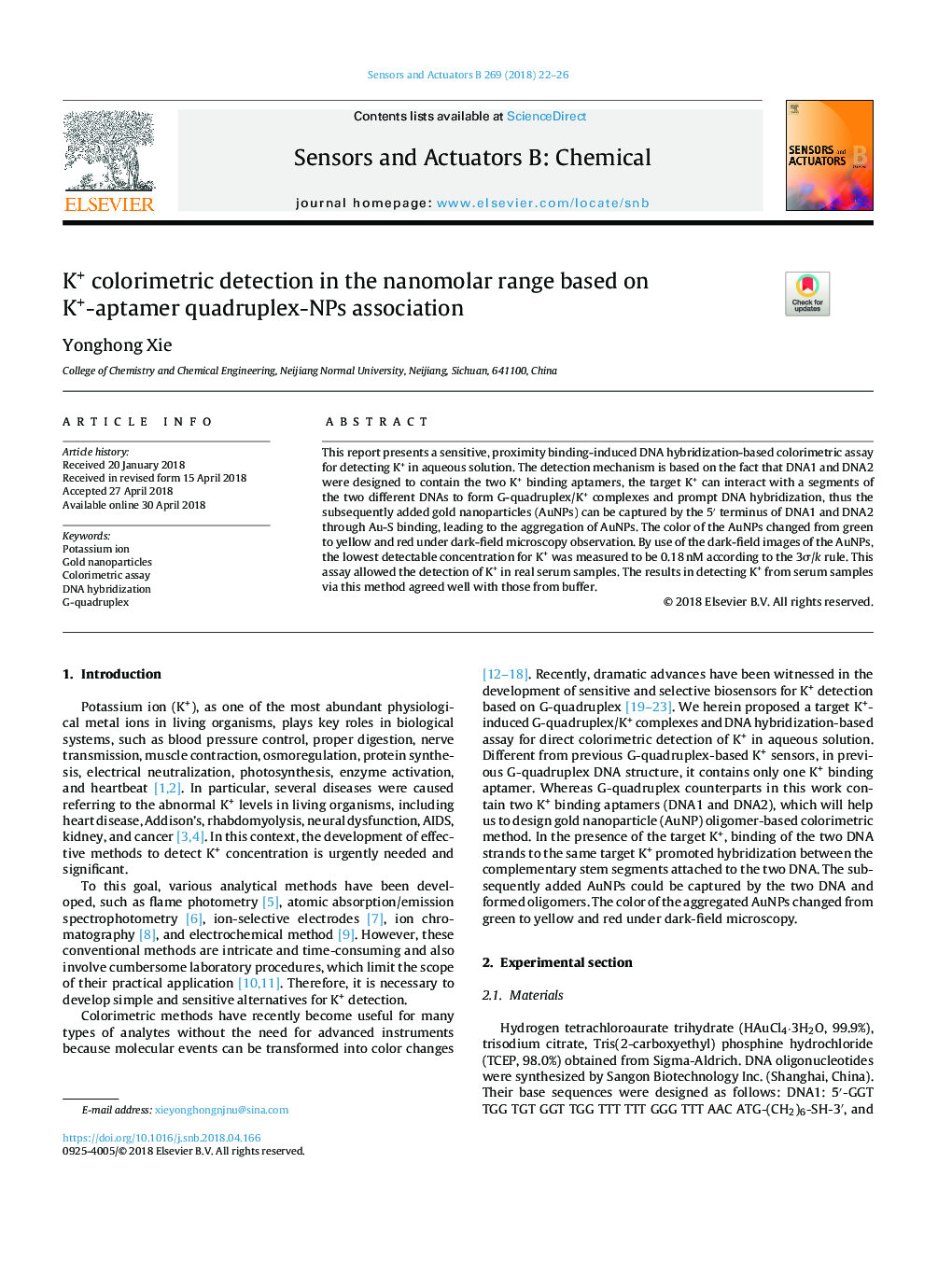| Article ID | Journal | Published Year | Pages | File Type |
|---|---|---|---|---|
| 7139066 | Sensors and Actuators B: Chemical | 2018 | 5 Pages |
Abstract
This report presents a sensitive, proximity binding-induced DNA hybridization-based colorimetric assay for detecting K+ in aqueous solution. The detection mechanism is based on the fact that DNA1 and DNA2 were designed to contain the two K+ binding aptamers, the target K+ can interact with a segments of the two different DNAs to form G-quadruplex/K+ complexes and prompt DNA hybridization, thus the subsequently added gold nanoparticles (AuNPs) can be captured by the 5â² terminus of DNA1 and DNA2 through Au-S binding, leading to the aggregation of AuNPs. The color of the AuNPs changed from green to yellow and red under dark-field microscopy observation. By use of the dark-field images of the AuNPs, the lowest detectable concentration for K+ was measured to be 0.18â¯nM according to the 3Ï/k rule. This assay allowed the detection of K+ in real serum samples. The results in detecting K+ from serum samples via this method agreed well with those from buffer.
Related Topics
Physical Sciences and Engineering
Chemistry
Analytical Chemistry
Authors
Yonghong Xie,
